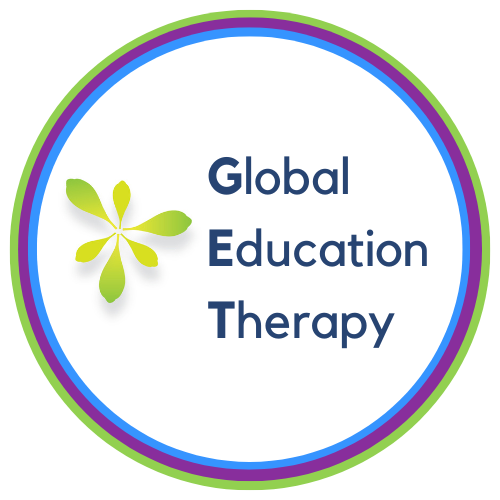Help! Why is My Child Hard to Understand?
Global Education Therapy, formally known as Worldwide Speech, is the pioneer of online education, speech therapy, and occupational therapy. We have over 12 years of experience providing services online.
One superpower parents have is being able to understand their child’s speech when others can’t! However, sometimes even parents struggle to understand what their child is saying which leads to frustration for parents and children. If you’re concerned about your child’s "intelligibility” AKA the ability to be understood by others, reach out to us for FREE 20-minute consultation with our experienced online speech therapists to GET the help your child needs!
Typical Percentage of Intelligible Speech
Intelligibility to parents: 18-36 months
By 18 months a child's speech is normally 25% intelligible
By 24 months a child's speech is normally 50-75% intelligible
By 36 months a child's speech is normally 75-100% intelligible
(Source: Lynch, Brookshire, and Fox, 1980, p. 102, cited in Bowen, 1998).
Intelligibility to strangers 12-48 months
By 12 months a child’s intelligibility is normally 25% intelligible
By 24 months a child’s intelligibility is normally 50% intelligible
By 36 months a child’s intelligibility is normally 75% intelligible
By 4 years old a child’s intelligibility is normally 100% intelligible
What Causes Unintelligible Speech?
Speech Sound Disorder
Motor Planning deficits (childhood apraxia of speech, dysarthria)
Stuttering
Today we’ll focus on…
Speech Sound Disorders
First, it’s important to explain the difference between speech and language. Language is how we express and understand ourselves and others whereas speech refers to the sounds we use to speak.
A speech sound disorder is when a child struggles to say certain sounds or patterns of sounds. The most common speech sound disorder is an articulation disorder. Articulation disorders, which are sometimes called speech impediments, lisps, etc, are when saying certain speech sound is a struggle, like having a hard time saying “r,” or saying “th” instead of “s,” like “think” for “sink.”
Another speech sound disorder is called phonological disorder. A phonological disorder is a pattern of errors (see phonological processes chart). Some of the most common phonological error patterns include fronting, stopping, and final consonant deletion. These patterns affect more than one sound. This is often seen in children with childhood apraxia of speech (CAS). A phonological disorder can lead to more unintelligible speech since it stretches beyond speech sounds into speech patterns across different contexts.
Signs and symptoms
Jumbled sounding speech: can’t tell where one word starts and another begins
Leaving out sounds: “cu” for “cup” or “poon” for “spoon”
Using another sound: “thing” for “sing” or “wabbit” for “rabbit”
Adding sounds: “buhlack” for “black”
Crackly sounding speech: lateral lisp – air comes out the sides of cheeks making a distorted “s”
Leaving out syllables “tephone” for “telephone” [1]
Considerations
Both accents and dialects can influence speech sounds. The first language acquired by a bilingual or multilingual individual can influence speech sound production and the phonological rules of other languages learned.
When is it time to see a speech therapist?
Gordon-Brannan & Hodson (2000) determined that kids above 4 years old with speech intelligibility scores below 66% should be considered as candidates for intervention.
How can a speech-language pathologist help?
Specific instruction: When working to improve a child’s intelligibility, a speech-language pathologist (SLP) will first teach your child about how to correctly say their target sounds. For example, if a child has a frontal lisp (e.g., thing for sing) the SLP will instruct the student to place their tongue behind their upper teeth.
If you are questioning whether or not your child may have a speech sound delay or disorder, schedule a free 20-minute consultation! Our expert speech therapists are dedicated to easing your parenting struggles with convenient online education via telehealth
Still have questions? You can always reach out to Global Education Therapy! Go to Global Education Therapy for our:
FREE parent handouts
FREE parent resource videos
FREE online parent support group
FREE online webinars
FREE 20 min consultation with Global Education Therapy to see if we can GET the help your child needs!
References
https://www.asha.org/practice-portal/clinical-topics/articulation-and-phonology/#collapse_2
https://www.asha.org/public/speech/disorders/Speech-Sound-Disorders/
https://www.stanfordchildrens.org/en/topic/default?id=speech-sound-disorders-in-children-160-236
https://kidmunicate.com/speech_language_disorders/speech-delay-or-disorder/
https://www.speechandlanguagekids.com/increase-self-awareness-and-carry-over/
https://www.mybaba.com/lisps-young-children-worried-can-help/


